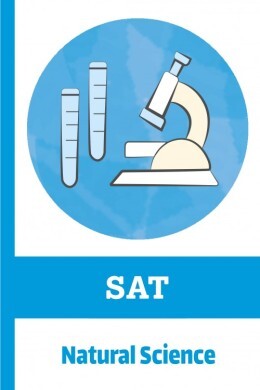SAT Natural Sciences - Astronomy and Aerospace Science
Here you will learn some English words related to astronomy and aerospace science, such as "comet", "flare", "orbit", etc. that you will need to ace your SATs.
Review
Flashcards
Spelling
Quiz

a scientist who studies or observes planets, stars, and other happenings in the universe
a scientist who studies the physical properties and phenomena of celestial objects and the universe as a whole
a device that simulates the motion and appearance of celestial objects such as planets, stars, and galaxies, typically using projectors and optical systems to depict the solar system and universe
a building where scientists observe stars, meteors, the weather, etc. using equipment such as telescope
related to or occurring in the sky or outer space
any of the rocky bodies orbiting the sun, ranging greatly in diameter, also found in large numbers between Jupiter and Mars
a piece of rock or metal from space that has hit the surface of the earth
an exploding star that as a result is emitting a very large amount of light, more than the sun
a specific group of stars that form a pattern and have a name related to their shape
an object in space that is a mass of ice and dust and when it nears the sun it starts illuminating in the shape of a tail
a small, dense, and faint stellar remnant that is left after a medium-sized star exhausts the nuclear fuel in its core and undergoes gravitational collapse
a planet that is outside the solar system
a region in the solar system located between the orbits of Mars and Jupiter, populated by numerous small celestial bodies called asteroids
to move around a star, planet, or a large object in space
the orbital movement of a planet, moon, or satellite around another body
the process by which the surface of an object, such as a comet or an asteroid, erodes or vaporizes due to the effects of solar radiation and other environmental factors
the outer layer of the Sun's atmosphere, observable as a plasma halo during a solar eclipse
a sudden, brief burst of increased brightness observed from the sun's surface, usually accompanied by a burst of energy and radiation
related to or characteristic of planets or the solar system
a depression on the surface of a celestial body, formed by the impact of cosmic debris such as meteoroids or asteroids
relating to or originating from outside the Earth or its atmosphere
the visible surface of a star, including the Sun, where energy is emitted as light and other forms of electromagnetic radiation
to overshadow another astrological body
a type of solar eclipse where the moon, passing between the earth and the sun, appears smaller than the sun, creating a ring of sunlight around the darkened moon
situated or occurring between stars or within the space that exists between stars
a glowing cloud of gas and dust in outer space, often the result of a star explosion or formation
a natural light display in the Earth's polar regions, caused by the collision of charged particles from the sun with atoms in the Earth's atmosphere
a celestial body that orbits the Sun and has sufficient mass for its gravity to pull it into a nearly spherical shape
a small, natural glassy object formed from terrestrial debris ejected during meteorite impacts, known for its smooth texture and found in strewn fields across the Earth's surface
a model of the celestial sphere, historically used to depict and study the positions of celestial objects, consisting of a series of hoops representing important circles in the sky
the science and practice of designing, building, and operating aircraft, including airplanes and spacecraft
a vehicle designed to travel in space
to send an object, such as a satellite, missile, etc., into space
a designated area at a spaceport or rocket launch site where rockets or spacecraft are positioned and prepared for liftoff
an unmanned spacecraft or device sent to gather information from space and transmit it back
a vehicle designed and used to go to space and return multiple times









